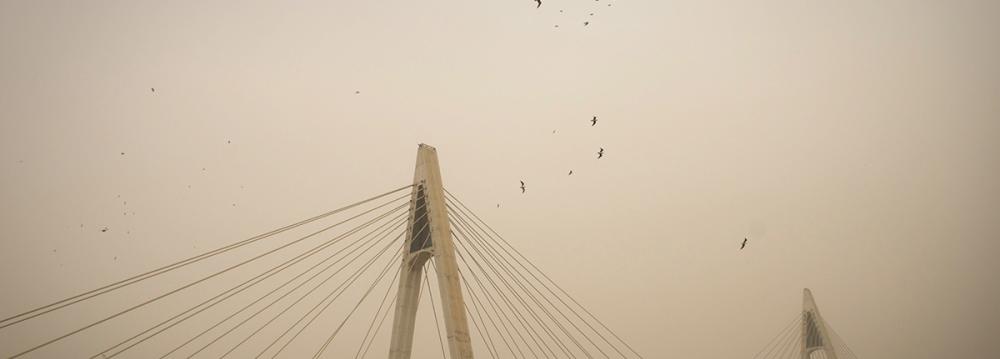Dust storms, which have crippled western Iran for two consecutive days, are not going anywhere anytime soon.
Speaking to ILNA, Ahad Vazifeh, the head of Weather Forecast and Early Warning Office at Iran’s Meteorological Organization, said the dust and sand storms will persist until late Sunday in the country’s western regions.
“Particulate matter concentration will then gradually subside,” he added.
However, Vazifeh noted that winds blowing from southeastern Iran—especially the drought-hit Sistan-Baluchestan Province—over the next few days will cause dust storms in the area that will extend as far as Qom and Tehran in central Iran.
Particulate matters blown over from Iraq over the past two days have made life in Iran’s western provinces nearly unbearable, with many locals taking to social media on Friday to call on officials to close schools and offices on Saturday, which local authorities refused.
Concentrations of PM10 (particulate matter with a diameter of 10 micrometers or less) were reported to be anywhere from six to 20 times higher than average in afflicted provinces, such as Khuzestan, Ilam, Kurdestan, Kermanshah and Bushehr.
The acceptable daily average of PM10 is 150 µg/m3.
War in Iraq, Dust in Iran
The government in Baghdad, which had reportedly said it would help tackle the sources of dust storms in Iraq, has been unable to deliver due to the country’s war with the self-styled Islamic State terrorist group, also known as Daesh.
“Due to Iraq’s current situation, plans to address the dust storms have not progressed and we keep getting hit by the storms originating in our neighboring country,” Massoumeh Ebtekar, the head of Department of Environment, said in a telephone interview late Friday with the state-run television’s Khuzestan channel.
She said Iranian authorities have been doing their part to tackle domestic sources of dust storms, adding that “without Iraq’s cooperation”, it is difficult to address the problem.
More than 60% of Hoor al-Azim Wetland in Khuzestan, whose desiccation as a result of outdated oil drilling had turned it into the main source of dust storms in the province, has been refilled with water.
“The wetland is in a much better state now and doesn’t contribute to the province’s plight,” Ebtekar said.
International Cooperation
Tehran has appealed for international help to remove the problem that has taken a high toll in human life and inflicted a massive economic cost on the government. However, only Iraq has shown some interest in working toward that goal, seemingly with little success.
A resolution proposed by Iran and backed by Pakistan and Iraq that aims to enlist the aid of Middle East countries to tackle dust storms in the region was approved at the second UN Environment Assembly (May 23-27) in Nairobi, Kenya.
During a brief visit to Tehran in April, then-executive director of the UN Environment Programme, Achim Steiner, said the Global Environment Fund will provide financial aid to a joint effort by DOE and UNEP to combat dust storms.
Ziaeddin Shoaei, the head of DOE’s task force to combat dust storms, said the Iranian government has allocated 600 billion to 1.2 trillion rials ($17.4 million-$34.8 million) in the next economic development plan (2016-21) to help alleviate the worsening dust storm crisis.
“This is while Iran needs to spend about $2.8 billion just to control the domestic sources of dust storms,” he said.


